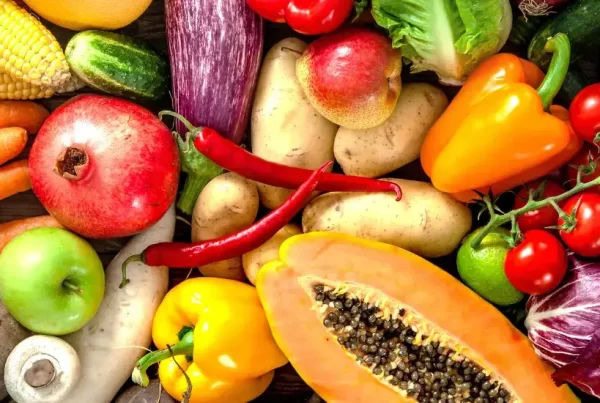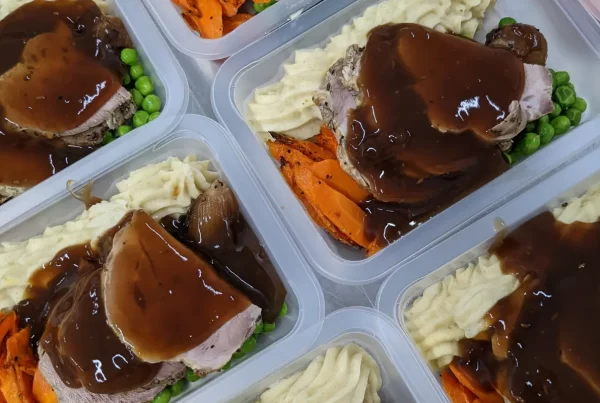Cooking isn’t just about applying heat; it’s about unlocking hidden layers of flavour, texture, and aroma that can turn everyday ingredients into unforgettable meals. The method you choose, whether roasting, grilling, steaming, sautéing, or slow cooking, can make the difference between a dish that’s merely good and one that’s truly spectacular.
When you understand how cooking methods affect flavour, you’ll start to see why professionally prepared dishes taste so incredible. Cameron’s Kitchen, a leading meal delivery service, employs skilled chefs with years of experience mastering these different cooking techniques. Their meals are designed to deliver restaurant-quality taste and texture, allowing you to simply order cooked meals and enjoy them at home without lifting a pan.
The Science Behind Food Cooking Techniques
When heat meets food, the laws of chemistry take centre stage. Proteins denature, starches gelatinise, and fats render, creating entirely new flavour compounds you can taste and smell. Understanding how cooking methods affect flavour gives you the power to choose the best ways to cook meat and vegetables for maximum enjoyment.
Whether you’re weighing up roasting vs grilling vs frying, each method creates unique chemical reactions that influence the final taste and texture. Moisture plays an equally important role. High-heat, dry methods such as roasting encourage evaporation, concentrating natural sugars, while wetter techniques like steaming retain water, producing a cleaner, lighter taste. Add in the magic of caramelisation and the Maillard reaction, and you have a recipe for everything from a golden, nutty crust on a steak to the deep sweetness of roasted pumpkin.
Texture completes the flavour experience. Gentle simmering turns brisket into fork-tender perfection, whereas a quick sear locks in juices and adds a satisfying snap. By pairing texture with taste, professional chefs craft dishes that feel just as good to eat as they do to smell.
The Importance of Heat Control
Precise heat management is the backbone of flavour development, and Cameron’s Kitchen chefs excel at controlling heat to achieve perfection. Too little heat and food stews in its own juices, turning mushy and bland; too much and proteins tighten, making meat tough and vegetables leathery.
Key points to remember:
- Low and slow (90-120 °C) breaks down collagen in tougher cuts, releasing gelatin and yielding silky sauces.
- Moderate heat (160-190 °C) melts fat evenly, perfect for golden roast chicken skin.
- High heat (200 °C+) triggers rapid Maillard browning, adding that irresistible crust to a reverse-seared steak.
Conversely, uncontrolled heat can sabotage flavour:
- Excessive temperatures scorch spices, giving a bitter aftertaste.
- Frequent temperature swings cause meats to seize, squeezing out precious moisture.
- Boiling oil overheats quickly, leaving fried foods greasy rather than crisp.
The Role of Ingredients
The quality of raw ingredients determines just how far a cooking technique can take you. Fresh, locally sourced produce contains higher levels of natural sugars and amino acids, giving roasting or grilling more to work with.
There’s a powerful synergy between ingredients and different cooking techniques:
- Fat-rich cuts bloom under slow cooking, the gently rising temperature coaxing flavours from marrow and connective tissue.
- Leafy greens shine with a lightning-fast sauté that keeps colour vibrant and nutrients intact.
- Root vegetables caramelise beautifully when roasted, their inherent starches converting to sugars for a sweet finish.
Pairing the right product with the right method is how Cameron’s Kitchen creates meals that taste home-cooked yet carry a restaurant pedigree.
Exploring Popular Cooking Methods
Different types of cooking techniques unlock different qualities in your ingredients. Understanding how cooking methods affect flavour lets you choose the approach that best suits the dish you have in mind, or decide when it’s worth letting a pro handle it for you.
Below is a snapshot of how five popular methods impact taste, texture, and aroma:
- Roasting: Dry, even heat surrounds food, encouraging caramelisation on the outside while gently cooking the centre for a sweet-savory depth.
- Grilling: Direct, high heat creates smoky char lines, forming complex Maillard flavours in seconds.
- Steaming: Moist heat cooks without agitation, preserving delicate aromas, nutrients, and vivid colours.
- Sautéing: Quick contact with a hot pan adds a lightly crisp exterior while locking in moisture for bright, concentrated flavours.
- Slow Cooking: Low temperature over hours melts connective tissue and blends seasonings, building rich, layered tastes and melt-in-the-mouth textures.
At Cameron’s Kitchen, chefs blend these food cooking techniques daily. Roasting sweet potatoes for natural caramel notes, searing grass-fed beef before a long braise, and flash-sautéing greens to keep them emerald-bright all add up to meals that feel freshly cooked when you heat them at home.
So, which method matches which ingredient?
- Red meats thrive on roasting or grilling for a crusty exterior, or slow cooking for fall-apart tenderness.
- Poultry prefers moderate roasting to render fat without drying the meat.
- Fish and shellfish benefit from gentle steaming or a brief sauté to keep flesh succulent.
- Root vegetables love high-heat roasting, forming sweet edges that contrast with a creamy centre.
- Leafy greens are best quickly sautéed or steamed to retain nutrients.
- Legumes transform under slow cooking, soaking up herbs and spices.
Roasting and Grilling
Roasting envelopes food in hot, dry air, usually 180-220 °C, drawing surface moisture out so natural sugars can caramelise. Meanwhile, amino acids react with those sugars in the Maillard process, creating hundreds of new flavour molecules that taste toasty, nutty, and savoury.
Grilling pushes this further. Intense, radiant heat (often 250 °C+) chars the exterior, adding a hint of smoke. Dripping fats vaporise on hot grates, rising back to coat the food in an aromatic finish.
Steaming and Sautéing
Steaming gently heats food with water vapour at around 100 °C, preventing nutrient loss and maintaining pure, clean flavours. Because ingredients never contact liquid water, they stay firm yet tender.
Sautéing, by contrast, relies on a thin coat of hot oil (about 180 °C) to swiftly brown surfaces while the interior remains moist. This adds subtle caramel notes without overcooking.
Steaming suits:
- Delicate fish fillets
- Dumplings or dim sum
- Broccoli and bok choy
Sautéing excels with:
- Thin-cut chicken breast strips
- Leafy spinach, kale, or Swiss chard
- Aromatic bases like onion, garlic, and capsicum
Slow Cooking
Low-and-slow (90-120 °C) methods, whether braising in an oven, simmering in a slow cooker, or sous-vide, give time for collagen to convert into silky gelatin, infusing sauces with body and flavour. Starches break down, spices meld, and the entire dish becomes greater than the sum of its parts.
Cameron’s Kitchen leans on slow cooking for signature items. By starting with a hot sear to trigger Maillard browning, then letting the meat bathe in aromatic stock for up to eight hours, chefs coax out deep, comforting flavours you’d struggle to replicate after work.
From here, it’s clear that mastering each method demands skill, timing, and premium ingredients, exactly what professional chefs bring to every plate.
Why Expertise Matters in Cooking
A perfectly cooked meal doesn’t happen by accident; it’s the product of training, precision, and an instinctive feel for ingredients. Professional chefs understand how seemingly small choices, pan temperature, resting time, seasoning layers, dramatically influence flavour, texture, and aroma. That know-how is what turns an ordinary dinner into a memorable experience and explains why so many Brisbane and Gold Coast residents now order cooked meals from Cameron’s Kitchen instead of wrestling with pots after a long day.
At Cameron’s Kitchen, a team of experienced chefs combines high-quality, locally sourced produce with advanced food cooking techniques such as sous vide and careful seasoning calibration. By cooking meats at exact temperatures, locking in juices with vacuum-sealing, and finishing dishes with a quick sear or aromatic garnish, they ensure every bite tastes freshly made.
Balancing Flavours and Textures
Great chefs think in terms of sweet, salty, sour, bitter, and umami, ensuring no single element overpowers the others. They:
- Layer flavours gradually, marinating proteins, seasoning during cooking, and finishing with fresh herbs.
- Contrast textures, pairing creamy mashed pumpkin with crisp sautéed greens, or tender slow-cooked lamb with toasted almonds.
- Use aromatics, garlic, ginger, and Cameron’s signature spice blends, to deepen complexity without overwhelming natural tastes.
Elevate Your Meals with Expertise
Cooking techniques aren’t just scientific curiosities, they’re the keys to transforming wholesome ingredients into flavour-packed, soul-satisfying dishes. From the smoky char of grilled vegetables to the melt-in-the-mouth tenderness of slow-cooked lamb, each method has the power to reveal new dimensions of taste and texture. Cameron’s Kitchen chefs harness these techniques with precision, delivering meals that feel indulgent yet nourishing, exciting yet familiar.
If you’re ready to enjoy that level of craft without spending hours in the kitchen, explore Cameron’s Kitchen. Order fresh ready made meals prepared by professionals who understand exactly how cooking methods affect flavour, then have them delivered chilled to your door across Brisbane and the Gold Coast. You’ll get restaurant-quality dishes, balanced nutrition, and zero stress, just heat, serve, and savour every bite.








